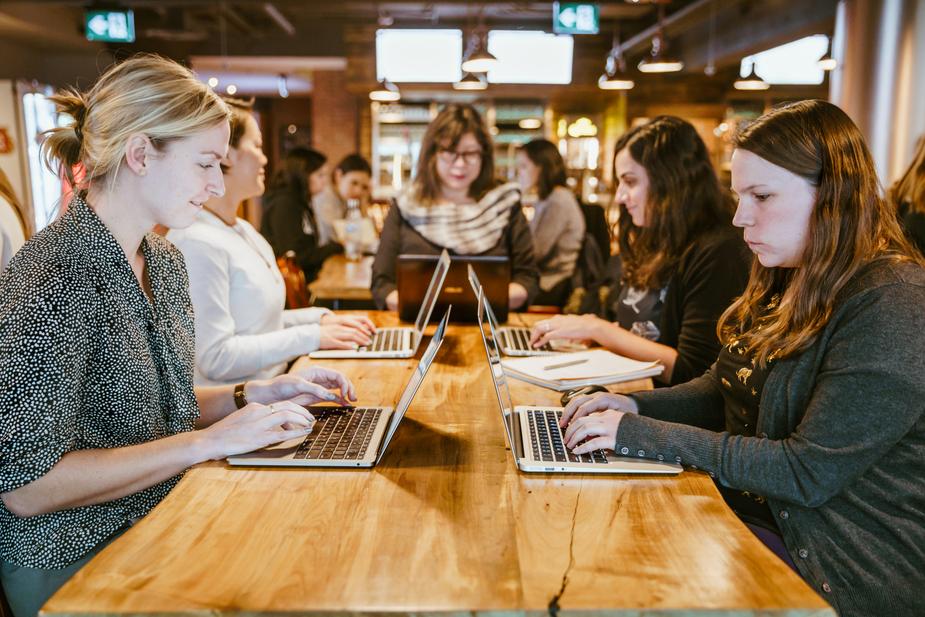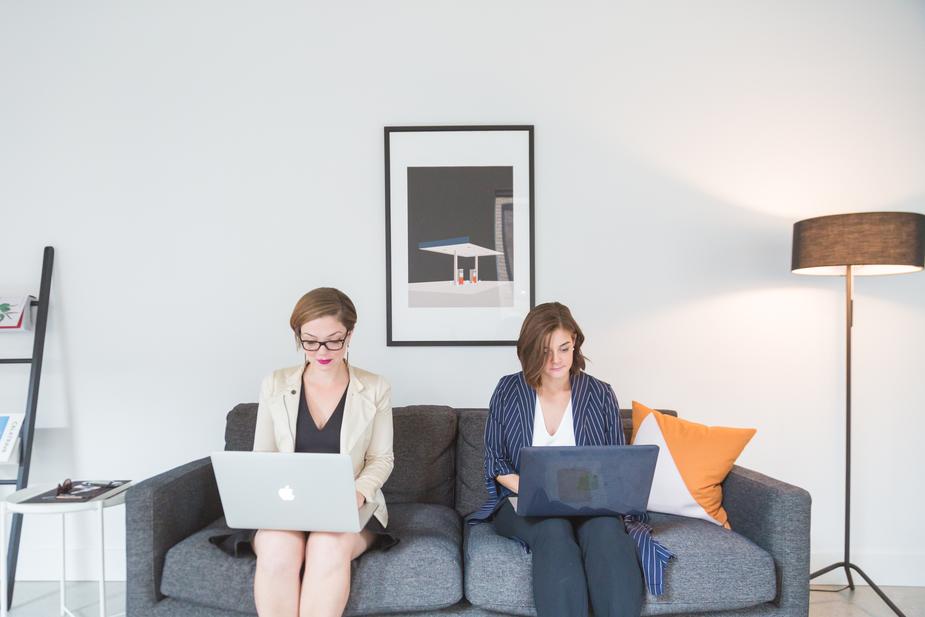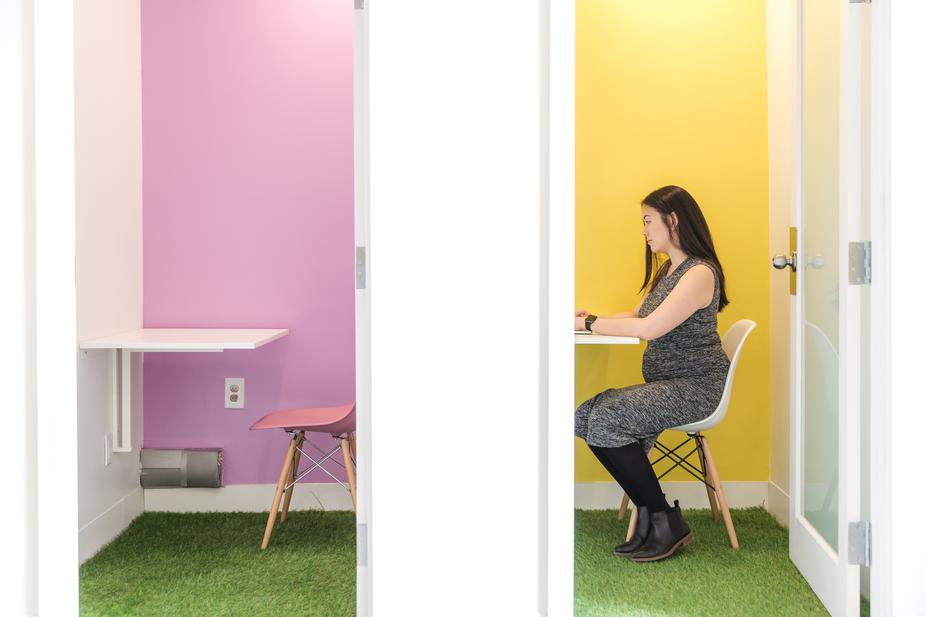From opening up employee communication to fostering stronger interpersonal bonds, open offices certainly can provide many benefits. But for anyone who’s actually worked in an open office, the negatives may, at times, outweigh the positives.
After all, what happens when someone needs to take a phone call? Where can employees go for a one-on-one private meeting? Is there a place to work in peace and quiet?
Such limitations have driven company leaders and office design experts to seek a new type of environment — one that can change and adapt according to daily employee needs.
Here’s what you should know about the future of flexible office design.
Benefits and Drawbacks of Open Offices
Open offices were originally meant to foster collaboration and creativity while giving employees more space to move and breathe.
According to Jim Belosic, CEO at Short Stack Labs, open offices can also give team leaders a clearer picture of everyday life at work. Belosic explains that open offices may keep employees tuned into what people are discussing while at the same time making everyone more approachable, thereby fostering a culture of open communication.
While open offices can offer these benefits for some employees, they don’t foster productivity for all employees at all times. Great employees who thrive on being able to focus are particularly at risk of being hindered by the distractions of an open office environment.
Software designer and innovation strategist William Belk has dedicated his time to researching the needs and achievements of such high-performing employees, and he believes that open offices create a wealth of distractions for such individuals. When a high performing employee needs a quiet, distraction-free zone, open offices simply don’t provide a safe space in which to concentrate.
Another detriment of open offices is that they can cause stress and anxiety, particularly for high performing or introverted employees. The incessant noise in open office environments breeds overstimulation, especially in people who are quiet or more reserved. In turn, overstimulation leads to stress, which is in itself a distraction that further hinders productivity.

The Alternative: Introducing Flexible Office Design
When neither a cubicle nor an open office space provides the ideal environment for modern workers, the need for a flexible spaces — environments that can provide either privacy or collaboration as needed — comes into focus.
A flexible office space replaces rigid cubicles with transformative spaces that, according to workplace interior resource TurningArt, “offer easy flexibility to cater to daily movement, various workflows, and collaboration.” Flexible office spaces cater to millennial workers especially because they’re adaptable, creative and without boundaries.
Meeting the Demand for Flexible Workspaces
The rising demand for flexible workspaces was captured in a survey by CapitalOne and Wakefield Research. In this study on workplace productivity, more than 80 percent of millennials surveyed agreed with the statement “I have my best ideas when I’m able to use flexible workspace.”
William (Billy) Baker and Michelle Cleverdon, from CapitalOne’s workplace solutions team, dug a little deeper into the research. Baker found that nearly 9 in 10 millennials think that design flexibility is important in their work environment. Further, respondents cited comfort, aesthetically vibrant work environments and overall adaptability in the workplace as crucial features in an ideal workspace. Specifically, moveable furniture was seen as a key characteristic of the ideal office environment.
In other words, having increased control over the space itself is becoming more important than ever in offices.
Creating Third Places
Flexible office environments provide more than just additional meeting spaces and private rooms. In fact, they provide what sociologist Ray Oldenburg defined in 1989 as a “third place.”
Third places are neutral, public spaces where people can spend time sharing ideas, working on personal projects, and more.
As Oldenburg recently told Steelcase, large corporate environments are beginning to realize the value of creating a third place within their offices. Whether its a café or a set of couches, third places in office environments provide a relaxing space where employees can connect and unwind.
Communications strategist Jason Kinney adds that more companies are realizing the role that third places play in mimicking neutrality. By creating a tangible alternative to sitting at a desk, third places allow employees to engage in natural dialogue while, quite literally, letting down their walls.
Because third places are neutral and non-defined, people can use them however they wish. This enables creativity to flourish, which in turn leads to happier, more productive employees.
Flexible Design and Employee Productivity
The link between collaborative, open-ended employee spaces and team productivity is illustrated in a study by architectural firm Gensler.
This study sought to examine design factors that contribute to an effective workplace, and how design can support worker engagement and performance while influencing organizational culture.
After surveying 2,035 knowledge workers in the US, the study’s authors found that workers whose companies allow them to decide when and where they work were more likely to have higher job satisfaction. Moreover, Gensler co-CEO Diane J. Hoskins says that employees who had more choice in how they worked viewed their companies as more innovative than those without such choices.

Elements of Flexible Office Design
When you’re considering how to redesign workspaces for improved productivity and happiness, its important to ask employees which elements they need and prefer. Here are a few examples of design elements that are commonly implemented:
A Variety of Workspaces
Jessi Craige, a writer at Evernote, stresses the importance of creating many different types of working spaces, in addition to collaboration areas. This might include a flexible office where there are both cubicles and meeting rooms, plus the potential to move walls around for specific meetings or brainstorming sessions.
Adaptable Furniture
Scott Lesizza, who owns the workplace furniture and accessories company Workwell, explains that non-assigned seating is also becoming more popular in flexible office design. This, along with multipurpose spaces that can be used by all team members, builds the foundation for an adaptable environment. Oval desks that can seat multiple people, along with adjustable desks and tables, will also become priorities in office environments designed for flexibility.
Privacy On Demand
According to workplace ergonomics company Humantech, Inc., flexible office environments should also have the ability to create private offices, along with cubicle dividers that can easily be dismantled and soundproof rooms for working solo. These high-productivity spaces can then be balanced with communal areas, such as kitchens and lounge seating areas, to let employees decide for themselves whether they want to work collaboratively or in quiet contemplation.
Assessing the Success of a Flexible Environment
To ensure that flexible office spaces work well for your team, it’s important to ensure accountability across all measures.
Robert Glazer, founder and CEO of Accessibility Partners, says some leaders worry that a flexible office environment and culture may lead to lack of productivity. If people are allowed to move around the office and choose where they work, how can leaders be sure that work is getting done?
Glazer explains that creating accountability through company-wide guidelines, and setting expectations, can support productivity while maintaining the flexibility employees seek.
Leaders also need to consider how office design can play a role in representing company values, according to design professionals Peter Bacevice, Liz Burow and Mat Triebner. For example, a company with a more flexible office space may be perceived as more adaptable and innovative, which could boost its competitive edge.
Aligning your office environment with your company ideals can ensure that clients, prospective hires and other visitors understand your values clearly when entering the space.
Images by: Matthew Henry, Nicole DeKhors, Matthew Henry
